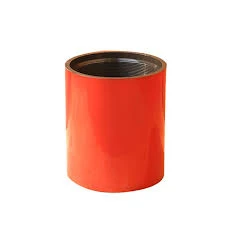- Afrikaans
- Albanian
- Amharic
- Arabic
- Armenian
- Azerbaijani
- Basque
- Belarusian
- Bengali
- Bosnian
- Bulgarian
- Catalan
- Cebuano
- Corsican
- Croatian
- Czech
- Danish
- Dutch
- English
- Esperanto
- Estonian
- Finnish
- French
- Frisian
- Galician
- Georgian
- German
- Greek
- Gujarati
- Haitian Creole
- hausa
- hawaiian
- Hebrew
- Hindi
- Miao
- Hungarian
- Icelandic
- igbo
- Indonesian
- irish
- Italian
- Japanese
- Javanese
- Kannada
- kazakh
- Khmer
- Rwandese
- Korean
- Kurdish
- Kyrgyz
- Lao
- Latin
- Latvian
- Lithuanian
- Luxembourgish
- Macedonian
- Malgashi
- Malay
- Malayalam
- Maltese
- Maori
- Marathi
- Mongolian
- Myanmar
- Nepali
- Norwegian
- Norwegian
- Occitan
- Pashto
- Persian
- Polish
- Portuguese
- Punjabi
- Romanian
- Russian
- Samoan
- Scottish Gaelic
- Serbian
- Sesotho
- Shona
- Sindhi
- Sinhala
- Slovak
- Slovenian
- Somali
- Spanish
- Sundanese
- Swahili
- Swedish
- Tagalog
- Tajik
- Tamil
- Tatar
- Telugu
- Thai
- Turkish
- Turkmen
- Ukrainian
- Urdu
- Uighur
- Uzbek
- Vietnamese
- Welsh
- Bantu
- Yiddish
- Yoruba
- Zulu
Exploring the Applications and Benefits of Tubing Crossovers in Various Industries and Settings
The Importance of Tubing Crossover in Oil and Gas Operations
In the oil and gas industry, the extraction of hydrocarbons is a complex process that requires sophisticated technology and equipment. One of the critical components that facilitate this process is the tubing crossover. While it may seem like a minor detail in the overall operation, tubing crossovers play a significant role in ensuring efficient and safe production.
Understanding Tubing Crossover
A tubing crossover is a specialized connection that allows for the transition between different sizes or types of tubing within a drilling or production system. These components are often used in wells where it is necessary to connect sections of tubulars that serve distinct functions, such as transitioning from a larger outer casing to a smaller production tubing. The primary purpose of a tubing crossover is to maintain the integrity of the well while enabling the efficient flow of oil, gas, or other fluids.
Design and Engineering Considerations
The design of tubing crossovers requires meticulous engineering to withstand the extreme conditions present in oil and gas wells. Factors like pressure fluctuations, temperature variations, and the corrosive nature of certain hydrocarbons must all be taken into account. Typically, tubing crossovers are made from high-strength steel alloys, and they must comply with industry standards to ensure safety and reliability.
The connection mechanisms used in tubing crossovers vary, including threaded joints, flanged connections, and welded seams. Each method has its advantages, depending on the specific application and environmental conditions of the well. Proper installation is crucial; even a minor error can lead to leaks or failures that could result in significant financial losses and environmental harm.
Operational Efficiency and Safety
tubing crossover

One of the foremost benefits of using a tubing crossover is improved operational efficiency. By allowing for seamless transitions between different types of tubing, operators can optimize the flow rates of hydrocarbons, which is essential for maximizing production. The ability to use various tubing sizes also allows companies to adapt to changing geological conditions and production requirements, ensuring that resources are extracted as effectively as possible.
Additionally, safety is a paramount concern in the oil and gas sector, and tubing crossovers contribute significantly to maintaining safe operations. Well integrity is crucial to preventing blowouts, leaks, or other catastrophic failures. Properly designed and installed crossovers minimize the risks of pressure loss or contamination, safeguarding both personnel and the environment.
Future Trends in Tubing Crossover Technology
As the oil and gas industry continues to evolve, so too does the technology surrounding tubing crossovers. Advances in materials science, such as the development of composite materials, promise to create even stronger and more resistant components. These innovations could lead to lighter crossovers that are easier to handle and install, reducing labor costs and improving safety.
Furthermore, with the growing emphasis on sustainability and environmental responsibility, tubing crossover designs are increasingly focusing on minimizing their ecological footprint. This includes features that facilitate better monitoring of fluid flows and leak detection systems that can alert operators to potential issues before they escalate.
Conclusion
In summary, tubing crossovers are an essential element in the oil and gas extraction process. By ensuring seamless transitions between different tubing types, these components optimize operational efficiency while maintaining safety and well integrity. As technology progresses, the evolution of tubing crossover design and materials will likely play a crucial role in shaping the future of oil and gas operations, making it an area worth monitoring for industry professionals and stakeholders alike.
-
Tubing Pup Joints: Essential Components for Oil and Gas OperationsNewsJul.10,2025
-
Pup Joints: Essential Components for Reliable Drilling OperationsNewsJul.10,2025
-
Pipe Couplings: Connecting Your World EfficientlyNewsJul.10,2025
-
Mastering Oilfield Operations with Quality Tubing and CasingNewsJul.10,2025
-
High-Quality Casing Couplings for Every NeedNewsJul.10,2025
-
Boost Your Drilling Efficiency with Premium Crossover Tools & Seating NipplesNewsJul.10,2025







